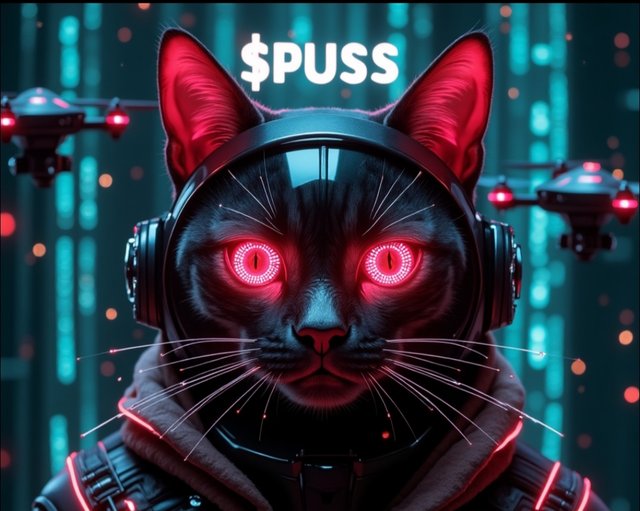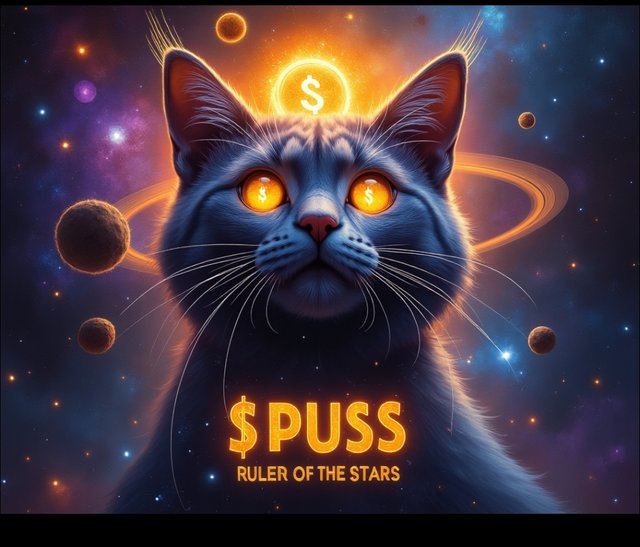Tokenomics Explained Using PUSS COIN
INTRODUCTION
Tokenomics, therefore, has the greater role in shaping how a cryptocurrency functions, grows, and sustains its value. PUSS Coin's tokenomics framework has been laid down to preserve the balance between scarcity, usability, and investor participation in the scheme of things. Burning mechanisms, governance, and utility applications seek to establish PUSS Coin as a sustainable asset among many options in the market.
One fantastic feature of PUSS Coin tokenomics that grabbed the media attention is the deflationary nature. This happens as supply is burnt away to put controlled scarcity that could bring in long-term appreciation in price. There is also the transaction fee that is charged to keep the network constantly running and reward those participating so that fair sustenance of the ecosystem is guaranteed.
While maintaining scarcity and fees, PUSS Coin also emphasizes utility and community participation. Token holders are beyond just passive investors. They exercise governance functions through voting that lead to a future for the coin. Within the ecosystem, the coin has various utilities to keep PUSS Coin in real-world use to encourage adoption, increase liquidity, and build trust with both retail and institutional investors.
TOKEN BURN MECHANISMS TO REDUCE SUPPLY
Within PUSS Coin, the token burn mechanisms destroy certain amounts of tokens, acting as a deflationary mechanism, which stabilizes the price or even hypes it. This creates a certain scarcity due to the permanent removal of a certain amount of coins from circulation. This utterly benefits long-term holders because; as the supply decreases, demand factors become more potent, which incentivizes investors to now view PUSS Coin as a better investment.
Burning usually occurs by some kind of automation or as an outcome of some event, such as a fee for transactions or hitting a certain volume during trades. Every burn stage reduces inflationary pressure while, in the very last stage, inflationary pressure disappears into thin air and, therefore, acts as a protectionary belt against oversupply risks for PUSS Coin. Burns help assures investors of the long-term sustainability, thus increasing their faith in value development and the tokenomics structure of PUSS Coin.
Burns not only contribute to investor value but also become clear symbols of the project itself. Community trust grows when developers openly communicate about token destruction.This approach to deflation allows investors to make assessments about the future stability of price, placing PUSS Coin among other cryptocurrencies that successfully use controlled scarcity as a means of boosting token value.
GOVERNANCE ROLE OF PUSS COIN HOLDERS
PUSS Coin operationalizes its community by appropriating governance roles for holders. The system's tokenomics allow investors to randomly vote on important proposals, including project upgrades, ecosystem expansion, and so forth. In this way, decision-making power remains divergent and does not lean toward centralization.
Governance plays the role of encouraging participation by turning investors into active stakeholders, and not passive holders. Voting rights, for instance, could extend to changes in transaction fees, the choice of strategic partners, or the reallocation of rewards. Such measures sustain greater engagement in the long term as the holders themselves are directly implicated and thus consider their own actions in the coin's development and the protection of their investment.
In addition, governance is an antidote to situations arising from arbitrary decisions taken by developers that jeopardize the project. The voting power mediated in the hands of users brings forth transparency and accountability. This democratic culture lends high credibility to PUSS Coin as a broadly decentralized community-backed initiative. As a result the investors are inclined to remain committed toward the growth of the ecosystem through the impact of their voices.
UTILITY OF PUSS COIN WITHIN ITS ECOSYSTEM
A key element of PUSS Coin tokenomics is its real utility. Aside from single-asset import-export trading, PUSS Coin can be used for payments, accessing features of the ecosystem, or participating in staking programs. This ensures the token has intrinsic value and, when considered relative to hype-driven tokens, is actually more resilient to market volatility.
Utility tends to increase adoption because users have a practical reason to use or even hold PUSS Coin. Token holders are more inclined to use PUSS Coin in decentralized applications, marketplaces, or reward systems, which encourages circulation instead of hoarding. Thereby, token outflow is automatically balanced by inflow, contributing to sustainable demand within the ecosystem.
In short, the more use cases that arise for PUSS Coin, the better its chances are of standing strong over the coming years. Developers need to work on building a solid ecosystem where the token has multiple applications, in that way, they can prevent a sudden exodus of investors. In other words, a real-world application attracts everyone investing in that token, from retail investors to institutions, the more liquidity it will have and the more investors will be willing to trust.
TRANSACTION FEES IN TOKENOMICS
Transaction costs form an important part of PUSS Coin tokenomics. Fees secure and sustain the network, while also punishing spam transactions. Fees may be used as rewards, placed into liquidity, or burned, balancing supply and maintaining owners' commitment in the long term.
Transaction fees thus represent a top-line revenue source within the ecosystem. These fees, as opposed to a one-time purchase or presale event, grow a self-sustaining economy where token-outs make the token more valuable. As PUSS Coin gains adoption, the continuous flow of fees allows it to grow in scale while rewarding the community members who stood by it.
Transparent fee structure will keep investor confidence intact. Badly designed fee models with exorbitant, hidden fees can and will erode trust, however, reasonable, even-handed fees build tokenomics on a foundation of fairness. And by tying these fees to the larger goals of its ecosystem, be it development, rewards, or liquidity pools, PUSS Coin lines up the financial incentives for long-term sustenance of its project.
CONCLUSION
Tokenomics focused on sustainability aims at deflationary burns with burning events plus community governance, ecosystem utility, and strategic transaction fee servicing. These components comes together to provide value expansion, decentralization, and actual use. In combining scarcity with use, PUSS Coin has created an ecosystem where holders are rewarded, and potential adoption, alongside long-term investor confidence, is promoted.



https://x.com/Memephiz148421/status/1964767598501089730
https://x.com/Memephiz148421/status/1964767342078132386
https://x.com/Memephiz148421/status/1964766275164574114
Note:-
Regards,
@adeljose